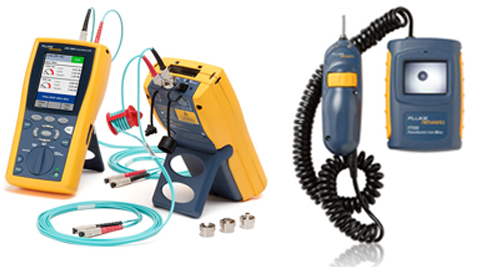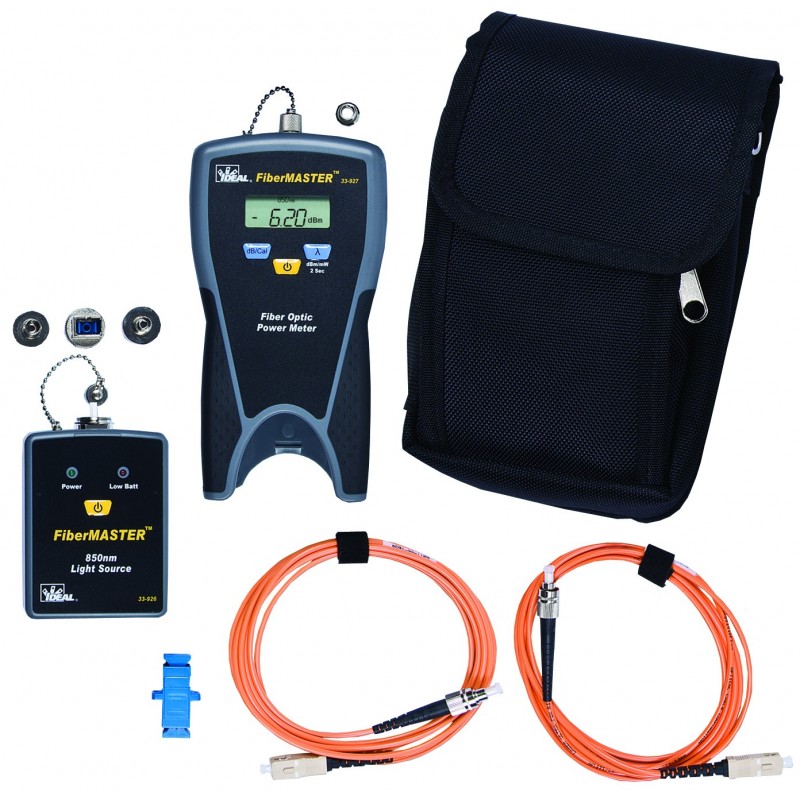Crucial Attributes to Look for in Optical Fiber Testing Tools
When evaluating optical fiber testing equipment, numerous vital attributes warrant mindful factor to consider to guarantee optimal performance and dependability. Compatibility with existing sector criteria enhances capability, while advanced measurement capacities, consisting of TDR and OTDR screening, offer essential insights into network stability. Comprehending these functions will certainly lose light on how to select the ideal tools for your details demands.
Precision and Accuracy
Accuracy and precision are essential parameters in the analysis of optical fiber screening devices. These 2 features make certain that dimensions reflect real performance of fibre optic systems, which is vital for efficient network installation, upkeep, and troubleshooting. Accuracy describes the nearness of a determined worth to the real value, while accuracy represents the repeatability of dimensions under the same problems.
When choosing optical fibre screening tools, it is important to take into consideration tools that offer high precision and precision to minimize errors in information analysis. Instruments such as optical time-domain reflectometers (OTDRs) and power meters should have calibration devices to make sure consistent efficiency with time. Furthermore, the specs given by manufacturers should detail the equipment's measurement unpredictability, which directly influences the reliability of test results.
Furthermore, the performance of optical fibre screening equipment can be affected by ecological aspects, such as temperature and humidity. Choosing tools designed to reduce these variables will enhance dimension fidelity. Finally, buying optical fiber screening tools with robust accuracy and precision features is fundamental for keeping optimum network performance and making certain the integrity of fiber optic communications.

User-Friendly User Interface
The performance of optical fibre screening devices is not only determined by its accuracy and accuracy; an easy to use interface plays a substantial function in improving functional effectiveness. A properly designed interface streamlines the interaction between the professional and the equipment, permitting a more user-friendly understanding of complicated functions.
Trick attributes of an easy to use user interface include clear navigating menus, sensible formats, and easily accessible controls. These aspects allow service technicians to execute examinations quickly without comprehensive training, lowering the chance of user error - ofda. Furthermore, aesthetic indicators such as progress bars, signals, and visual representations of information can dramatically boost the user experience by providing instant comments on the testing process.
In addition, adjustable settings can better improve operations by permitting individuals to readjust specifications according to certain screening demands. This flexibility not just conserves time however likewise guarantees that the tools satisfies diverse application needs.
Integrating aid attributes, such as tooltips and comprehensive manuals, right into the interface can further encourage individuals, promoting self-sufficiency and self-confidence in running the equipment. Ultimately, a straightforward interface is crucial for taking full advantage of the capacity of optical fibre screening devices, resulting in extra efficient and effective testing outcomes.
Transportability and Toughness
Portability and toughness are essential qualities of optical fiber testing devices, ensuring that it can stand up to the rigors of different settings while remaining easy to transportation. Technicians typically work in diverse setups, from telecoms hubs to remote installments, making it essential that screening devices are light-weight and portable (ofda). Devices created with portability in mind typically includes ergonomic handles and instances that facilitate simple and easy motion, thus enhancing operational efficiency on-site
Resilience is just as vital, as optical fibre testing equipment is frequently revealed to severe problems, including temperature level changes, moisture, and physical influences. Tools constructed with sturdy products such as strengthened plastics or metal real estates are better fit for these settings, lessening the threat of damage throughout use and transport. Furthermore, tools with water and helpful resources dirt resistance scores, such as IP scores, makes sure reputable performance in tough problems.
Compatibility With Requirements
Making certain compatibility with sector criteria is crucial for optical fiber screening devices, as it directly impacts the reliability and legitimacy of test results. Optical fibre networks are subject to stringent performance standards developed by different organizations, including the Telecoms Industry Organization (TIA) and the International Electrotechnical Commission (IEC) Checking equipment needs to abide by these requirements to make sure that dimensions are constant and equivalent throughout different systems and environments.
When picking optical fiber screening equipment, individuals ought to validate that the gadget meets relevant requirements important to their particular application, such as those associated to attenuation, bandwidth, and crosstalk. Tools that is certified with well established standards not just assists in achieving accurate outcomes yet also promotes interoperability among tools from different producers.
Furthermore, compatibility with requirements makes sure that the devices can be made use of in regulatory conformity circumstances, which is essential for tasks in fields such as telecoms, aerospace, and armed forces applications. Investing in optical fibre screening devices that aligns with existing market criteria is a fundamental aspect of maintaining top quality guarantee and accomplishing optimal network efficiency.
Advanced Measurement Abilities
Advanced measurement capacities are a specifying attribute of modern-day optical fibre testing tools, permitting for thorough evaluation of network performance. These capacities guarantee that specialists can assess essential specifications such as signal loss, dispersion, and data transfer, which are essential for preserving ideal interaction performance.
One that site trick facet is the capability to perform time-domain reflectometry (TDR) and optical time-domain reflectometry (OTDR) examinations. These techniques make it possible for individuals to determine mistakes, determine the length of fibres, and figure out the location of defects with exceptional accuracy - ofda. Furthermore, sophisticated equipment usually includes the ability to measure optical power degrees, helping to assess the general wellness of the network and ensure conformity with the called for specs.
Furthermore, some screening tools supply innovative algorithms for real-time evaluation, making it possible for quicker medical diagnosis and troubleshooting. In conclusion, investing in optical fiber screening tools with innovative measurement capabilities is vital for making certain network integrity and performance in today's requiring telecoms landscape.
Conclusion
